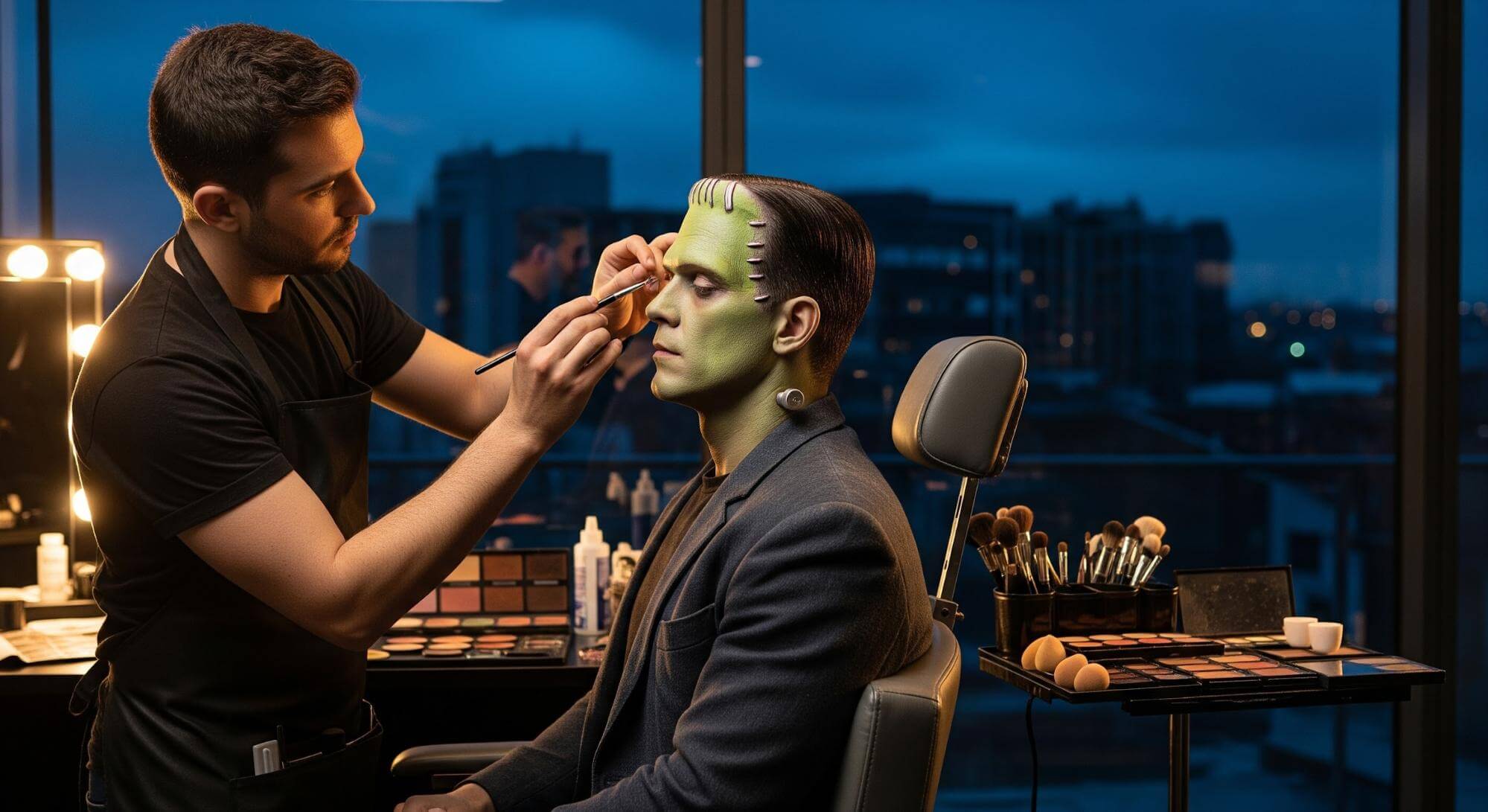
Jacob Elordi’s Jaw-Dropping Transformation in Frankenstein
This November, Guillermo del Toro resurrects Mary Shelley’s classic monster—and Jacob Elordi disappears beneath 10 hours of prosthetics to become something beautifully monstrous. Here’s how Hollywood’s hottest heartthrob became unrecognizable.
Jayne Turner – Staff Writer
Forget the chiseled jawline. Forget the smoldering stare that launched a thousand thirst tweets. When Jacob Elordi emerges in Guillermo del Toro’s Frankenstein, you won’t recognize him—and that’s exactly the point.
The 28-year-old Australian actor, who captured hearts in The Kissing Booth and proved his dramatic chops in Priscilla and Saltburn, has undergone a transformation so complete it redefines what movie makeup can achieve. Pale, scarred, haunting—Elordi’s creature is a technical marvel and an emotional gut-punch rolled into one unforgettable package.
From Rom-Com Heartthrob to Gothic Horror Icon
Standing at a towering 6’5″, Elordi first became a household name as the charming bad boy in Netflix’s The Kissing Booth trilogy. But those teen romance days are firmly behind him. This year alone, he’s tackling two of literature’s most iconic tortured souls: Frankenstein’s monster in del Toro’s reimagining, and Heathcliff in Emerald Fennell’s Wuthering Heights.
It’s a bold pivot—from kissing booth to gothic nightmare—and Elordi is leaning into it hard.
The 10-Hour Metamorphosis
Here’s what it takes to turn Hollywood’s latest leading man into Mary Shelley’s misunderstood monster: ten hours in the makeup chair.
The result? Elordi becomes virtually unrecognizable. Deathly pale skin stretches over prominent bone structure. Sunken eyes peer from shadowed sockets. Jagged scars crisscross his face and neck, telling the story of a being stitched together from death itself. Every detail screams monster—except for one crucial element.
His eyes.
Del Toro specifically cast Elordi for those soulful brown eyes, calling them “full of humanity. And he’s not wrong. Those eyes—wide, expressive, achingly vulnerable—evoke the same instinctive sympathy you’d feel for a lost puppy. They’re the emotional anchor that reminds you this “monster” is capable of feeling, suffering, longing. Elordi’s height adds another layer of authenticity, his imposing physique matching classical depictions of the creature while amplifying his tragic isolation.
Not Your Grandfather’s Frankenstein
Makeup designer Mike Hill threw out the rulebook for this one. Gone is the iconic green skin and flat-topped head with neck bolts that defined Boris Karloff’s 1931 portrayal. Instead, Hill crafted something disturbingly human—a creature that looks like it could have been loved.
“I didn’t want him to look like a victim of an accident,” Hill explains. “I wanted him to look like a beloved creation.”
Want to bring your own most creative visions to life? Learn how to here.
It’s a radical choice that perfectly mirrors del Toro’s vision: this monster wasn’t cobbled together carelessly. He’s Victor Frankenstein’s magnum opus, his greatest achievement. Would a brilliant scientist really slap staples in his creation’s skin and jam bolts through his neck? Hill didn’t think so.
The makeup consists of 42 individual silicone pieces in varying shades, meticulously applied to create seamless, startlingly realistic skin. The effect is simultaneously beautiful and unsettling—a creature caught between human and something else entirely.
The Performance Behind the Prosthetics
When Elordi got the call from del Toro, he wasn’t even sure which role he was being considered for. Once he learned he’d be playing the creature, something clicked. A longtime admirer of del Toro’s work, Elordi threw himself into the role with absolute commitment.
And honestly? Given his track record, some fans were nervous. Would Netflix’s rom-com golden boy be able to disappear into such a demanding, physically grueling role? Could he make us believe in a monster?
Early reactions suggest the answer is a resounding yes. Elordi’s performance reportedly transcends the remarkable makeup, tapping into the creature’s tragic humanity with raw emotional depth. He’s not just wearing prosthetics—he’s inhabiting them, breathing life into del Toro’s sympathetic monster.
A Fresh Take on a Timeless Tale
What makes this iteration of Frankenstein’s creature so compelling is the balance it strikes. By preserving Elordi’s expressive eyes and underlying bone structure, Hill and del Toro created something genuinely new: a monster who’s undeniably monstrous yet heartbreakingly human.
It’s a visual manifestation of the novel’s central tragedy—a being capable of love, intelligence, and connection, forever denied those things because of how he looks. In preserving glimpses of Elordi’s natural features beneath the prosthetics, the filmmakers remind us that beneath the horror lies something worth saving.
And let’s be real: even under ten hours of makeup, Elordi still manages to look striking. It’s a testament to both the makeup design and his bone structure that the creature maintains a strange, tragic beauty—perfectly suited to del Toro’s sympathetic vision.
What’s Next for Elordi?
This role marks a turning point. Elordi is proving he’s more than just a pretty face—he’s a serious actor willing to disappear into challenging, transformative roles. Between Frankenstein and Wuthering Heights, he’s staking his claim as this generation’s go-to for brooding, tortured characters from classic literature.
Not bad for a guy who started out in a teen rom-com.
Guillermo del Toro’s Frankenstein hits Netflix on November 7th, 2025, and is currently playing in select theaters. If you want to witness one of the year’s most talked-about transformations—and see if Elordi can make you cry for a monster—now’s your chance.
While you wait for this movie to roll out, check out these underrated Hollywood films.
Will Elordi’s creature become as iconic as Karloff’s? Time will tell. But one thing’s certain: you won’t be able to look away.



